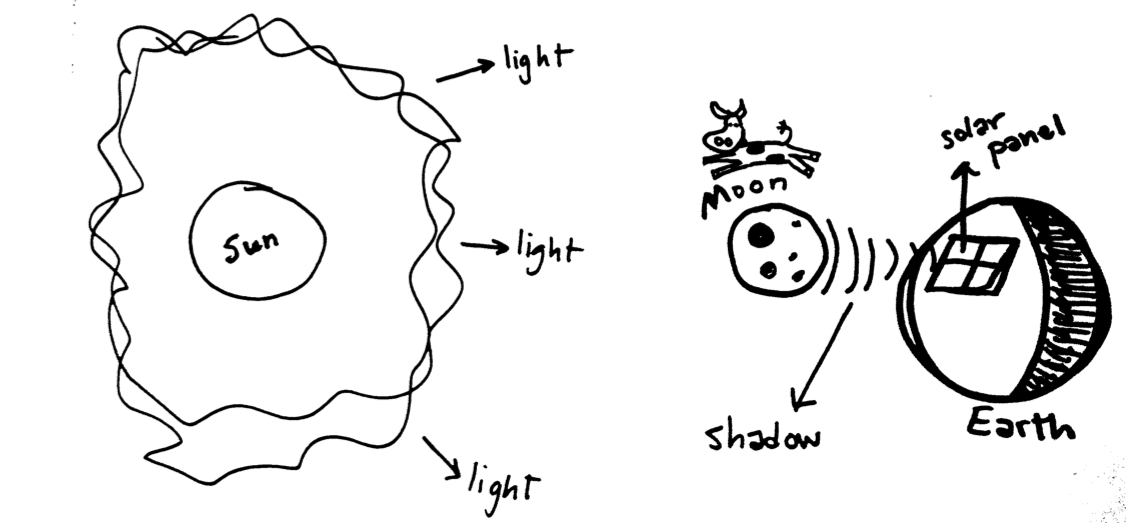So here’s the situation: There’s a giant ball of flaming gas spewing light in all directions. And, 93 million miles away, here on the surface of the Earth, you’ve got a nice, shiny sheet of silicon, turning that light into electricity. Everyone’s happy, until…
Along comes an 81 quintillion ton chunk of basalt rock with the gall to get in between the two and cast a shadow – quite literally – on this relationship.
This event – you might know it as a partial solar eclipse – happened across much of the Northern Hemisphere last week. Which brings us to this week’s IE Question:
What effect does a partial solar eclipse have on solar panels, and on their capacity to generate electricity?
First, a primer on the sun:
And here’s what is happening during a solar eclipse:
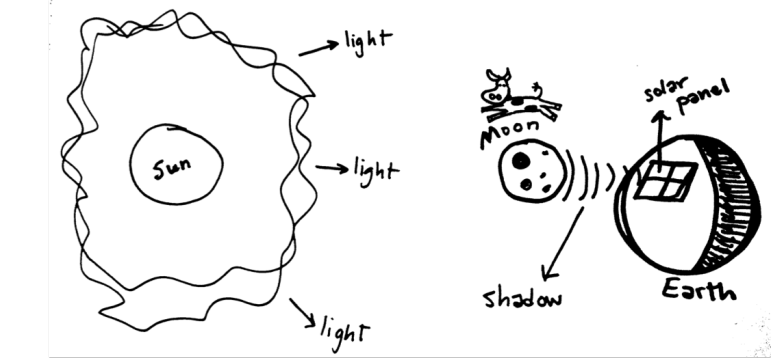
Jordan Wirfs-Brock / Inside Energy
This is the geometry of a partial solar eclipse, not the earth and sun playing Pong with the moon (although I understand how you could be confused).
The moon passes between the Earth and Sun in such a way that it partially – but not fully – blocks out the sun. Across the U.S., the moon obscured anywhere from less than one percent (in Boston, Massachusetts) to 56 percent (in Bismarck, North Dakota) of the sun’s surface at the peak of the eclipse.
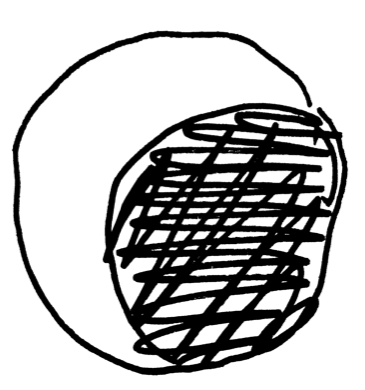
Jordan Wirfs-Brock / Inside Energy
If you were standing in Bismarck, North Dakota and had a pair of snazzy eclipse-viewing goggles, this is what the sun would have looked like at the peak of the eclipse yesterday.
Why does this matter? The same reason solar panels don’t work well on cloudy days or at night: The less light hitting a panel, the less electricity it is generating.
If you were walking around yesterday afternoon, and you forgot your eclipse-viewing glasses or pinhole camera, you might not have even noticed the eclipse. But did solar panels notice?
Luckily, there’s a research center – the National Renewable Energy Laboratory or NREL – that monitors such things. At the National Wind Technology Center outside of Boulder, Colorado, NREL operates an instrument that has been measuring light intensity – all day, every day – since 2001. At NREL’s website, you can download data for any day down to the minute. The key issue here is something known as “light intensity,” the total hemispheric shortwave irradiance – the kind of light that matters for solar power. Here is what the light intensity has looked like on every October 23 (the date of the recent eclipse) in the past 14 years. The day of the eclipse – October 23, 2014 – is highlighted in orange:
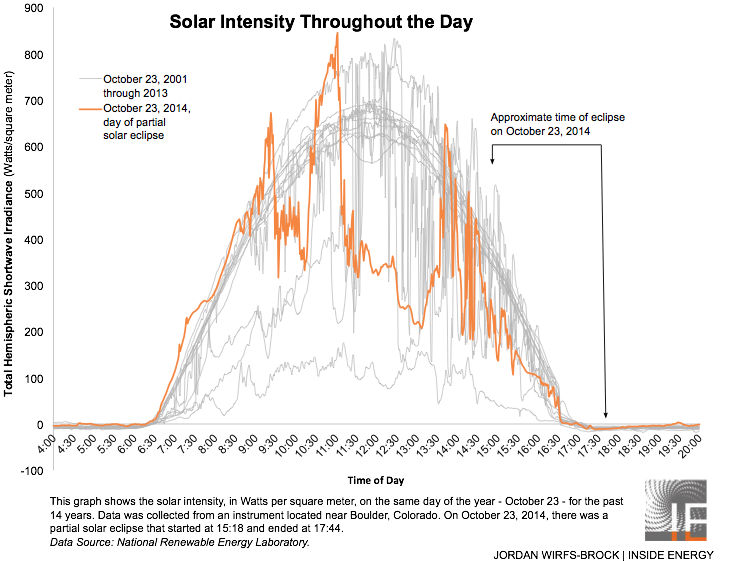
A couple of things pop out from this graph. First, solar intensity is pretty fickle, giving us noisy data. Second, the day of the eclipse is on the lower end of the solar intensity spectrum, but it’s not an outlier. And the intensity spikes and drops throughout the day (we do have some clouds here in sunny Colorado). All kinds of things – dust, clouds, pesky moons – get in the way of sunlight. If you didn’t know there had been an eclipse on that day, you might not have been able to pick it out of the fray.
But let’s zoom in on the time of eclipse, which started at 15:18 (3:18 pm for those who don’t like the 24-hour clock), peaked at 16:35, and ended at 17:44, to get a closer look:
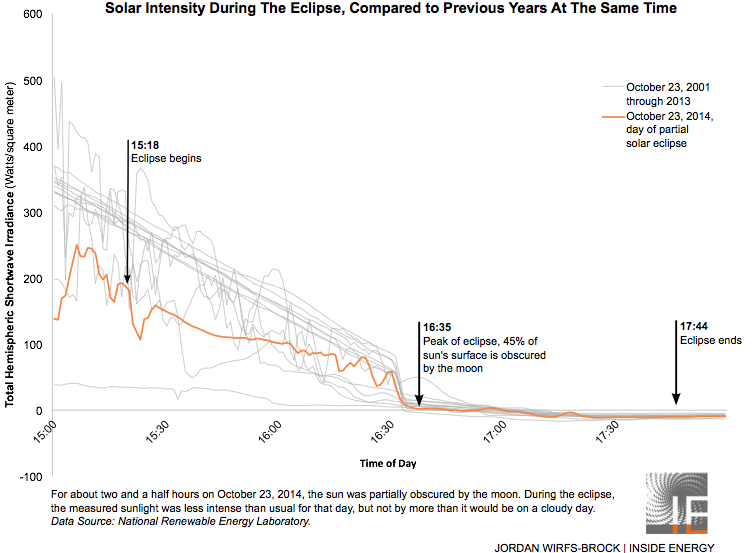
Again, there’s less light reaching the ground here, but not a crazy amount less. Last week’s partial solar eclipse was, in effect, just another cloudy day as far as solar panels were concerned.
But there’s a big difference: A solar eclipse is a cloudy day that we can predict. (Start getting ready: There’s a full solar eclipse coming up in August 2017.)
While solar power is still a small, albeit rapidly growing, contributor to the grid, solar eclipses won’t have a major impact on our electricity supply. But in places that are becoming more reliant on solar power, like Germany, grid operators are paying attention to and planning for upcoming eclipses. And NREL has tools to help solar engineers model their effects.
But the bottom line is that you don’t need to worry. A solar eclipse – which lasts at most a few hours – is not going to cause an energy apocalypse.
